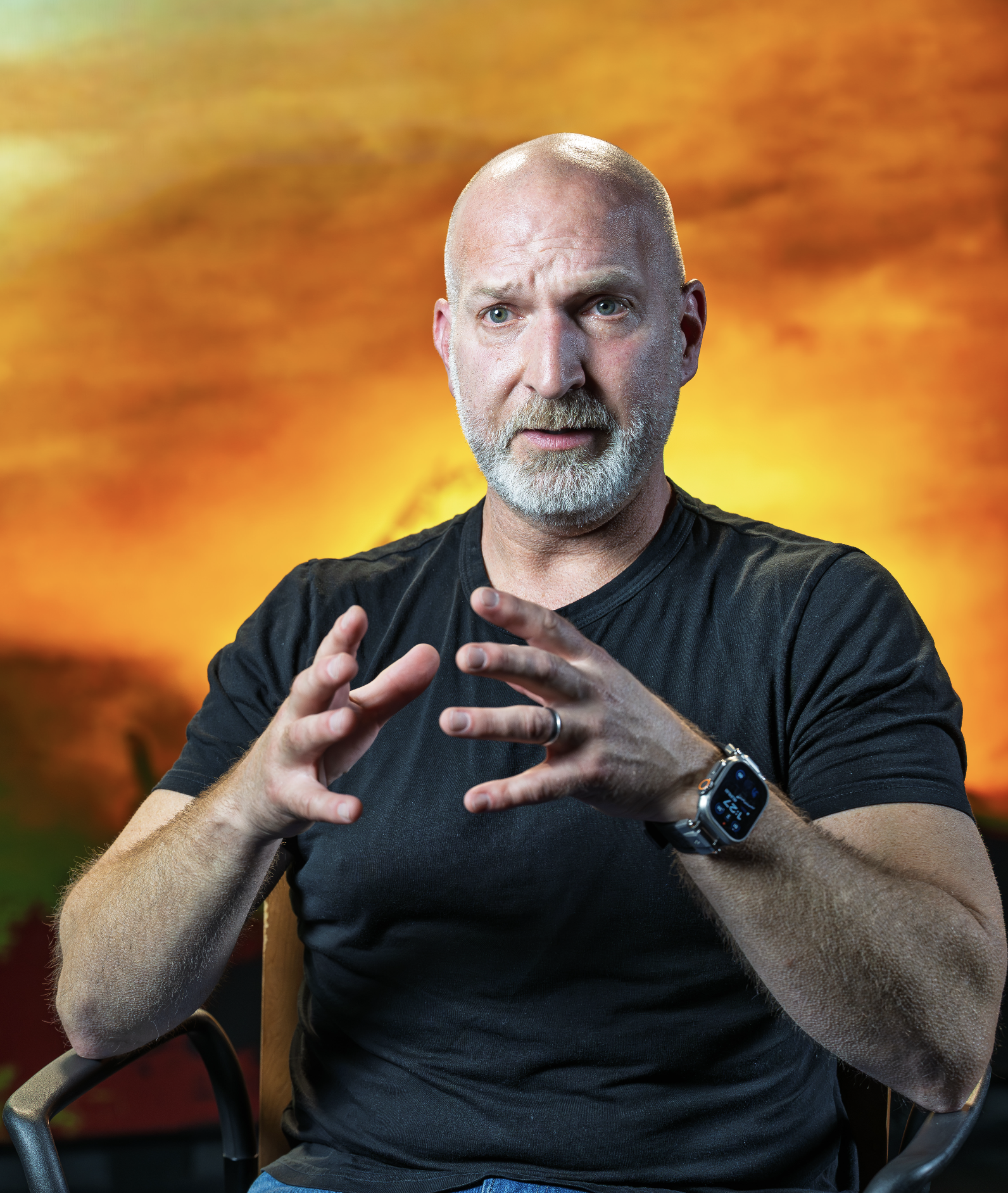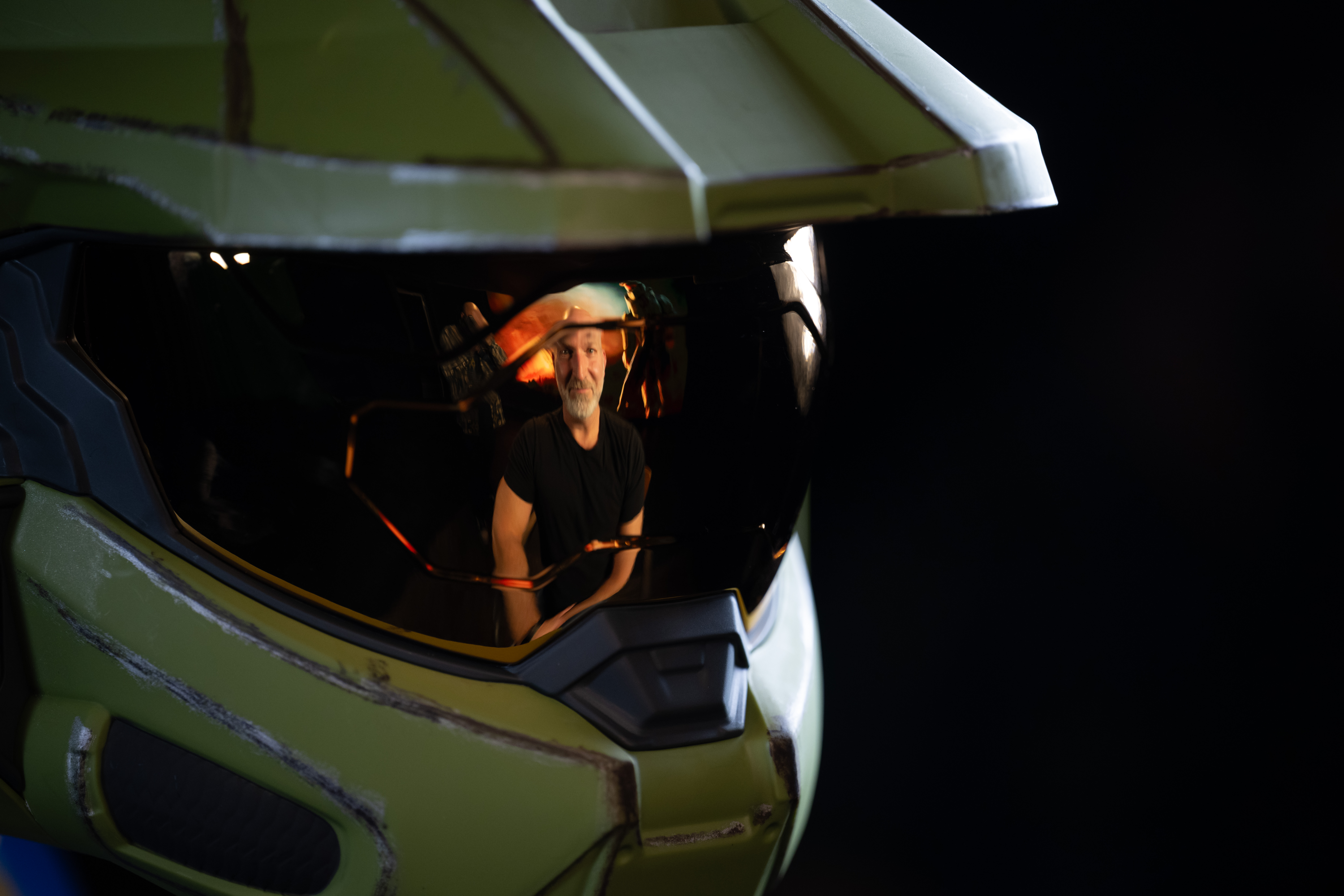When Marcus Lehto arrived at Kent State University in the 1980s, he didn’t yet know he would go on to co-create one of the most iconic universes in gaming history. He only knew he was drawn to a place that seemed to understand creativity on a deeper level.
“I never knew at that time that I would get into graphic design,” he says. “But I did know that Kent had one of the best schools on the East Coast for graphic design and for some of the other programs like architecture and fashion. It was a big draw for me, and I was quick to sign up.”
Today, Lehto is best known as the co-creator of Halo and the artist behind its legendary protagonist, the Master Chief — a character who helped define a generation of gamers and shape the future of interactive storytelling. But long before his designs became cultural icons, Lehto was a Kent State student learning the fundamentals of visual communication design (VCD) and discovering what it took to create.
“The program [for graphic design] was very challenging in a good way,” he says. “It put the students through a gauntlet of understanding what it takes to push the boundaries ... where we could really push our creativity.”
He still remembers that push — and the lessons that came from failure. “That led to some experimentation, which is always good and always necessary, especially with any kind of creative field,” he adds. “But with experimentation comes some failures, and you've got to pick yourself back up and try it again. And that was one of the key ingredients that really helped me as a student.”
Those lessons of persistence and iteration would later become the foundation of his creative career.

Finding His Tribe
Lehto remembers the late nights spent working alongside fellow art and design students in the basement of Verder Hall — hours that built not just portfolios, but lifelong friendships. His dorm building had a studio in the basement where he often found himself working late into the night with other students from design-oriented majors.
“We would stay up all night,” he says. “It was graphic designers, architects, illustrators that would be in that room together. We went through school together. We inspired one another with the things that we were working on.”

The group became a creative family. “But it's that tribe of artists that we had this camaraderie, this kind of esprit de corps that really helped motivate us,” he says. “It was a motivation that we needed to get through the program together. And, I just love that group and we still stay in contact to this day.”
The energy of that artistic community extended beyond the studio. “The design community here at the school was very energetic,” he recalls. “And I think that's part of what's really cool about Northeast Ohio in general is the arts are really embraced much more so than I found throughout other areas of the country. And Kent State really embodies that with its programs here.”
That passion — shared and sustained by peers and professors — kept him going through the most demanding projects. “That kind of energy that was present throughout the classrooms with the students and their passion for what they were doing was absolutely something that helped drive me and the energy that I needed to get through some of these programs and to really excel at the best I could.”
The program here really helped give me the tools necessary to enter the workforce to actually tackle the things that I didn't anticipate that I would be tackling in my professional career.
Design Thinking and the Pursuit of Excellence
Lehto says the VCD program didn’t just teach him software or technique — it trained him to think critically, experiment boldly and pursue excellence.
“The program here really helped give me the tools necessary to enter the workforce to actually tackle the things that I didn't anticipate I would be tackling in my professional career as a graphic designer once I exited the school,” he says. “So the program itself really helped provide me those tools in giving me an exposure to many different creative areas – from graphic design through visual illustration and other things that I did while I was here at the school.”
Lehto says this expanded his creative horizons. “It pushed me through those boundaries of understanding what I was capable of actually doing. And then I think one of the really big things too, that it helped me do is understand what that level of quality is, that bar of excellence that you really do need to hit in order to be successful, or in order to find something really special in your career and thereafter.”
That “bar of excellence” would soon guide him as he entered the rapidly evolving world of interactive media.
From Graphic Design to Game Design
Like many Kent State graduates, Lehto’s first job was in traditional design. “Going through the VCD program here at Kent and then venturing out into the professional world, I did start as a graphic designer and I worked as a graphic designer for many years,” he says.
But curiosity pulled him toward new technologies and tools. “It wasn't long into my journey there that I started to focus on 3D visualization and multimedia and interactive experiences and animation, some of these things that I was just doing on my own because I thought they were fun,” he says.
His employer noticed. “My current employer said, ‘Hey, look at what that guy can do,’” Lehto recalls. Those side projects evolved into professional work in 3D visualization, branding and interactive design — skills that, in the 1990s, were on the cutting edge.
“It wasn't long before that transitioned more toward real hardcore interactive media that I was really excited about doing,” he says. “So it was kind of a natural transition to go from that into video games.”
At the time, Lehto was playing a Macintosh game called Marathon, developed by a small Chicago studio called Bungie. “I said, ‘Hey, maybe one day I'll try to reach out to them and see if they might want someone to do graphic design for them,’” he says. “And so they immediately replied and said that they would love for me to do some UI work on a game they were creating called Myth: The Fallen Lords.”
Within a year, Lehto had joined Bungie full-time as its art director — moving his family to Chicago to begin the project that would change his life.
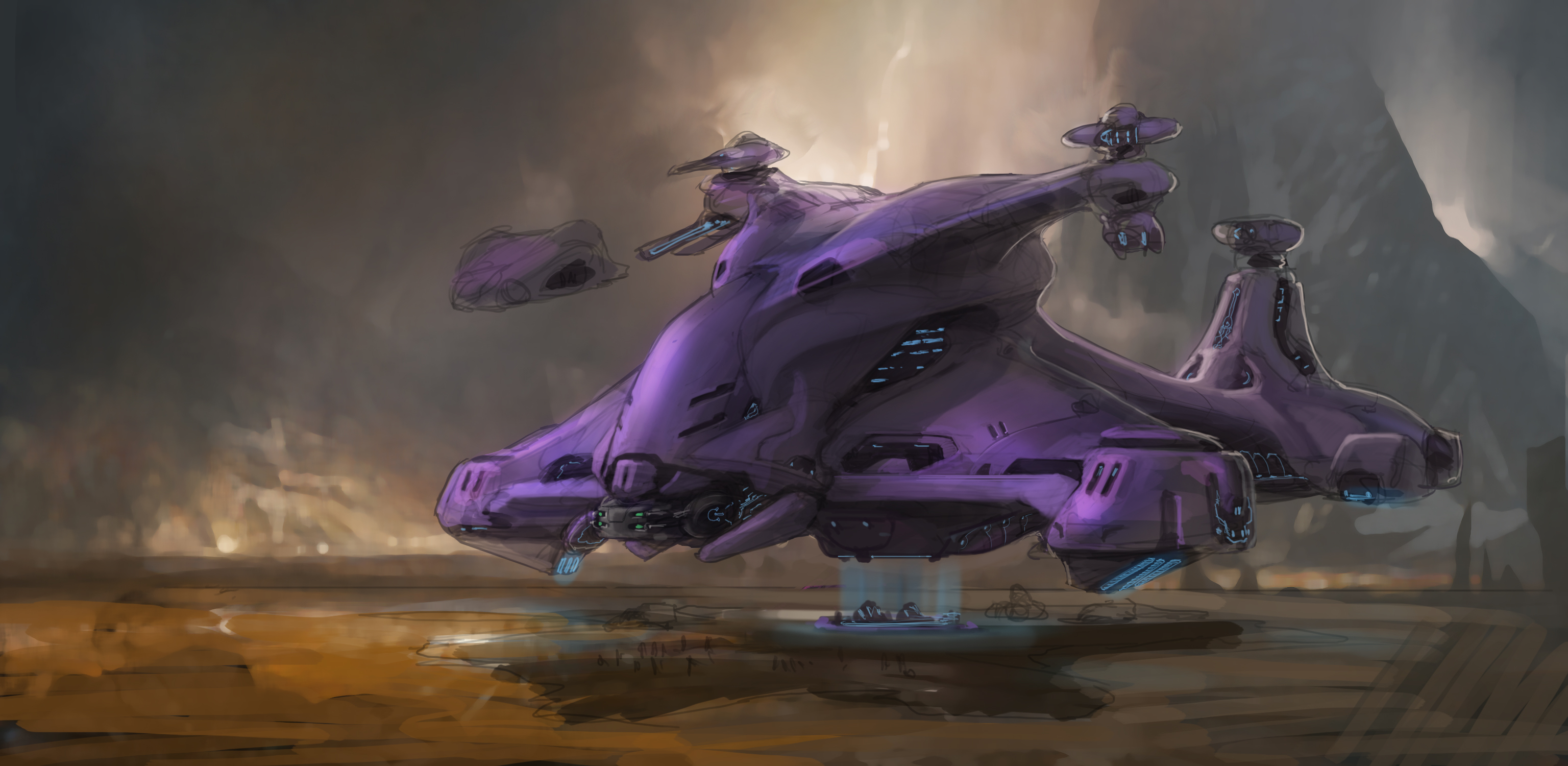
Creating a Universe
“So my first day at Bungie, when I moved out to Chicago with my family, was just myself and the current owner of the company, his name's Jason,” Lehto says. “So Jason and I worked together for about a year on the foundation of what would become Halo.”
What started as a simple tactical sci-fi game evolved into a fully realized world. “It was a world that we wanted to create. It was a world that we couldn't find elsewhere on the shelves out there. So we said, ‘let’s make it ourselves.’”
That creative spark drew directly from his Kent State roots. “I mean, that was all this fire in my belly that I just wanted to kind of create something that was unique and different and special out there,” he says. “That drive, that energy that we needed are things that I learned here at Kent at the very beginning through this program that we went through.”
When Bungie debuted Halo on stage with Steve Jobs at Macworld, Microsoft took notice — and soon acquired the studio outright. “We got up on stage with Steve Jobs at Macworld and we talked about it there,” Lehto recalls. “And then Microsoft said, ‘Steve Jobs can't have that. We're going to buy you and move you all to the Pacific Northwest, and then we're going to have you build this game for the Xbox.’”
The timing couldn’t have been better. “That was a marriage that was just a perfect timing at that moment to create a game like a first-person shooter sci-fi game for the Xbox console in 2000. I mean, that was just a perfect timing, the perfect wave of excitement, and it just hit the ground running.”
Lehto and the Bungie team poured themselves into Halo — not realizing they were about to redefine modern gaming. “We didn't know at that time that it was going to be something that was so special,” he says. “It wasn't until we had the first fans show up to our doors and say, you made something that changed my life. And that's when we knew that something really special had happened.”
A Cultural Phenomenon
What happened next went beyond anything the team imagined. When Halo: Combat Evolved launched alongside the first Xbox in 2001, it didn’t just help introduce a new console — it became the title that defined it. The game’s blend of cinematic storytelling, a fully realized sci-fi world and a new approach to first-person shooter controls set a standard that reshaped console gaming for years.
Halo’s influence grew rapidly. Midnight releases drew lines around the block, and Xbox Live multiplayer brought together players from around the world in a way no console title had before. By Halo 3, the franchise was a global entertainment force, earning blockbuster-level revenue on launch day and becoming a cultural touchstone for an entire generation.
Its reach extended well beyond the gaming community. Master Chief became one of the most recognizable characters in modern pop culture, and Halo imagery showed up everywhere from television to fan conventions. In places like the Las Vegas Strip, costumed Master Chiefs stood shoulder-to-shoulder with icons like Transformers and comic-book heroes — a sign of how deeply the franchise had embedded itself in the mainstream.
For Lehto, the most lasting impact comes from the players themselves. Over the years, he has heard from people who said Halo helped them through military deployments, difficult life chapters or long stretches away from home. Some met lifelong friends online; others met partners they would eventually marry. “It still keeps giving,” he says — a reminder that the universe he helped create continues to shape lives in ways he never expected.
Designing the Master Chief
Of all Lehto’s creations, none is more recognizable than the Master Chief — the stoic supersoldier whose armor became a symbol of the Halo franchise.
“The creation of the Master Chief is something that I went through so many ringers to try to find the right look, the right feel, the right stature for such a character,” he says. “We tried a lot of things.”
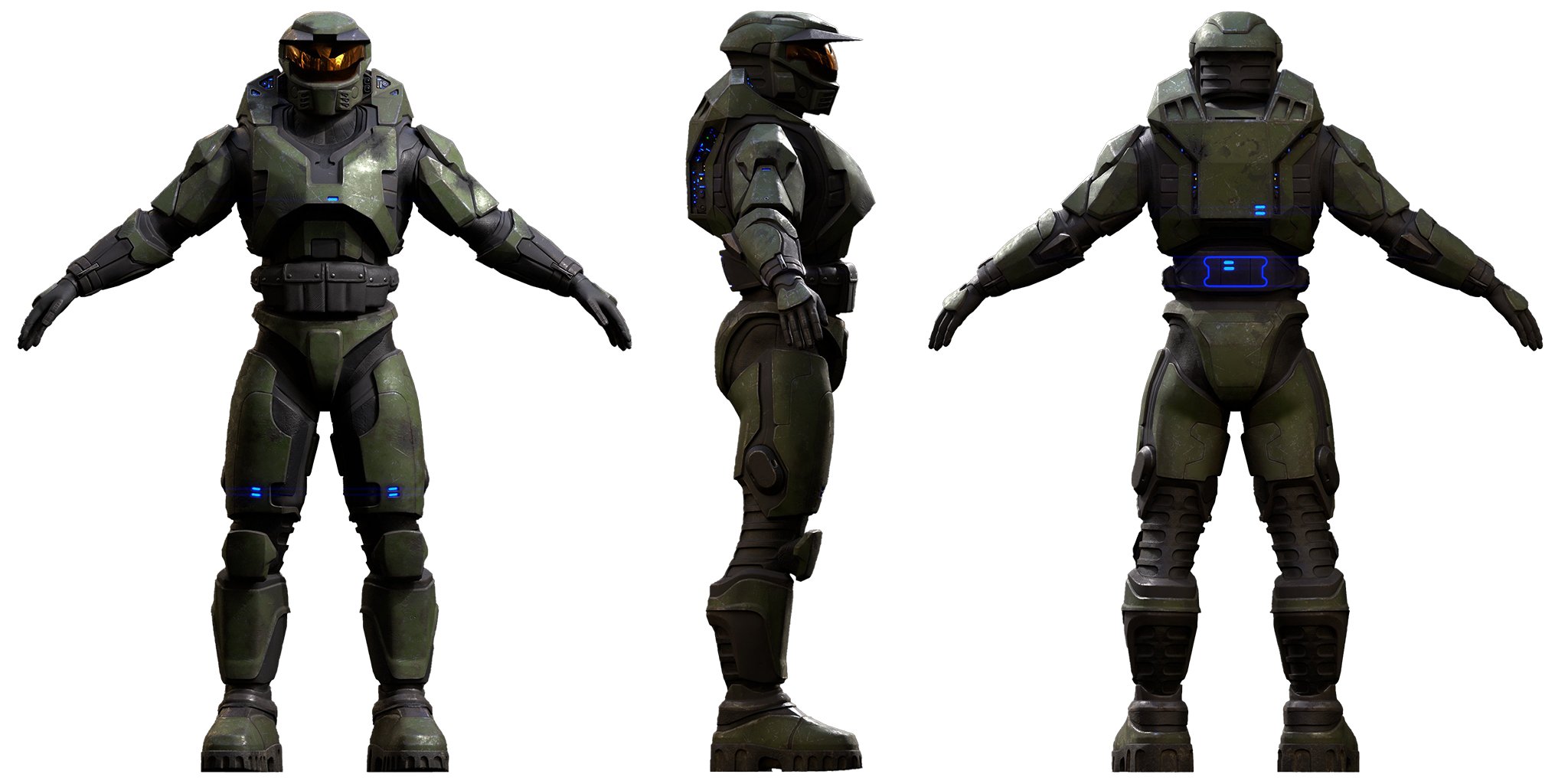
Early designs were too slender, too stylized. Lehto drew inspiration from unlikely sources: the shape of an M1 Abrams tank, the lines of an Apache helicopter, the gleam of a BMX helmet.
“And then from a visual design standpoint, I really did focus on some of the things I learned here at Kent State to break it down into the most basic visual elements,” he says. “It's such a key thing to get right in order to not overly complicate a design.”
He rebuilt the character nine times before getting it right. “It took forever, but I wasn't going to stop because I had learned through the program here that you don't stop when you're just on your first iteration.”
Marcus Lehto Returns to Kent State
Marcus Lehto, co-creator of the iconic Halo series and the mind behind Master Chief, reflects on his time at Kent State University, where he spent late nights working in Verder Hall developing his craft. Discover how his Kent State experience shaped his legendary career in game development.
A Legacy of Learning
Even after Halo became a global phenomenon, Lehto never forgot the lessons Kent State instilled — especially the value of self-motivation.
“Some of the key qualities that I found in the students here in the VCD program was their self-motivation, their self-capability and their drive to continue to learn without being spoon-fed,” he says. “That perseverance, that ability to actually charge forward and learn more on their own is a critical component to it.”
He believes that same curiosity and resilience remain essential for today’s students. “They've got a fire in their belly,” he says. “They’re eager to give and understand how they can create something together with us and learn from us.”
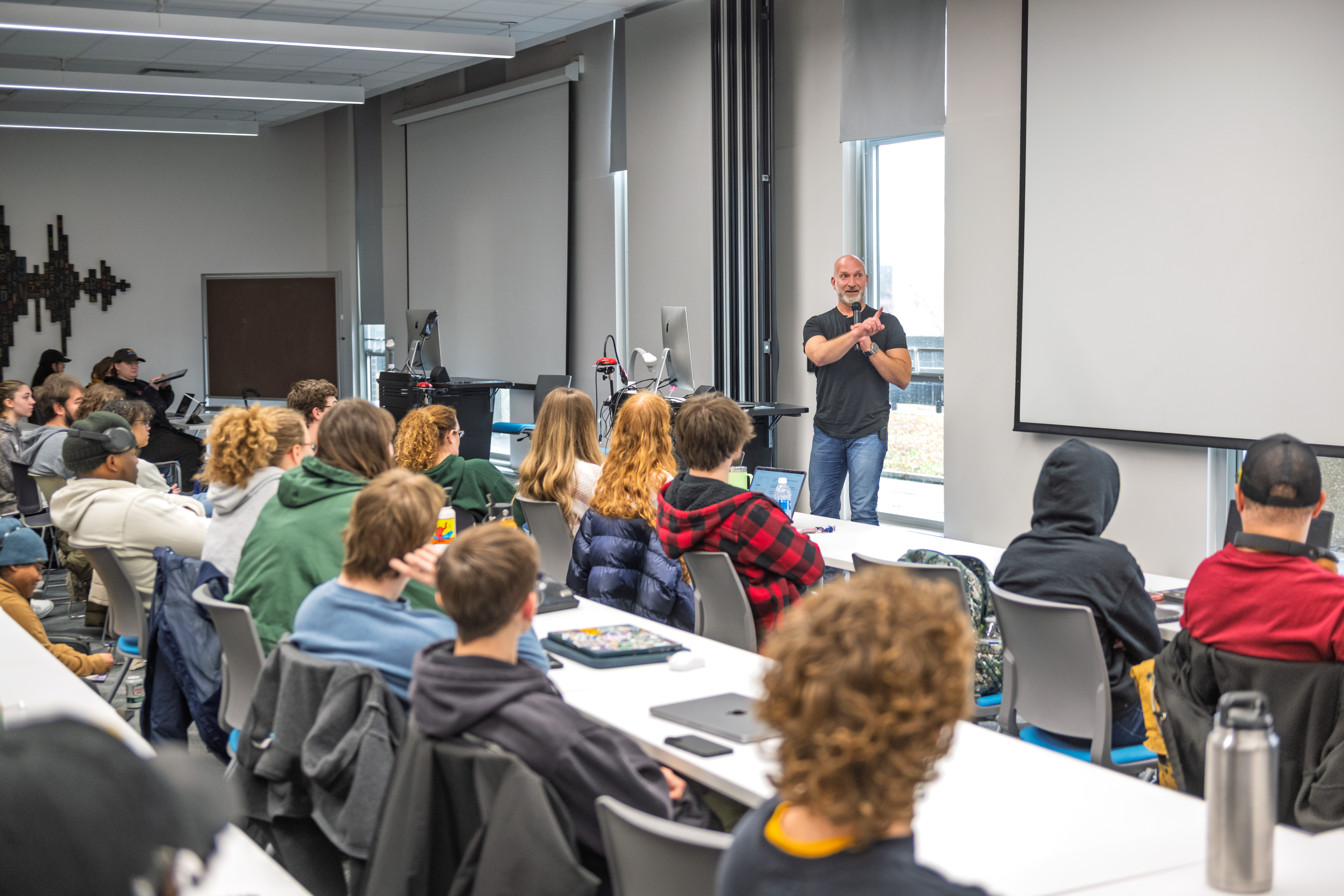



It’s a cycle he knows well — the same one that carried him from a Kent State studio to a world-changing creative career.
To any student who wants to come here for the VCD program or architecture or fashion ... bring with you an open mind, bring with you a desire to learn and a desire to really push yourself, because if you dedicate yourself to this program or one of the programs here at the school, you'll most likely come out on the other end someone who can be successful.”
He pauses, then smiles. “I tried my best and I think I became fairly successful with video games. And I think that it's something that this school helped me push to that area that I don't think I would've been able to get to otherwise.”


